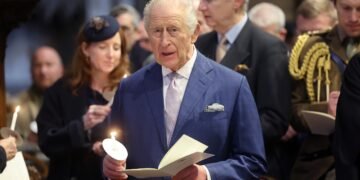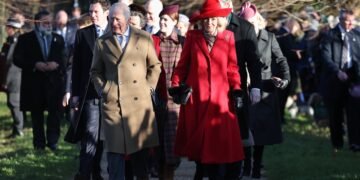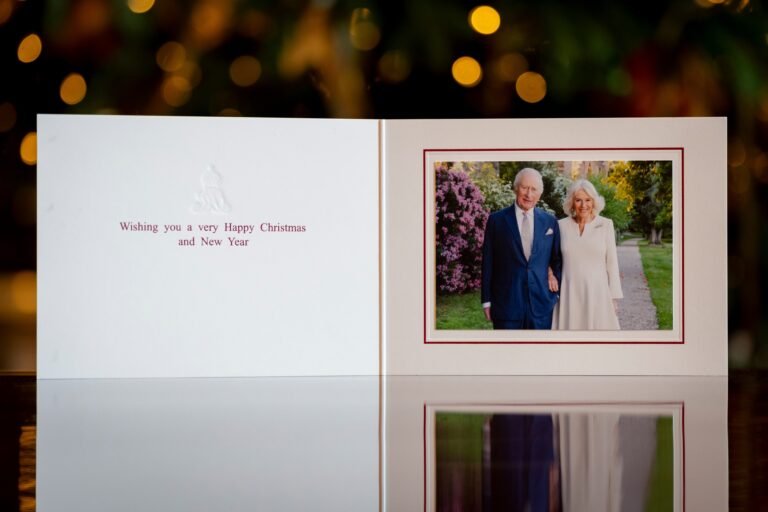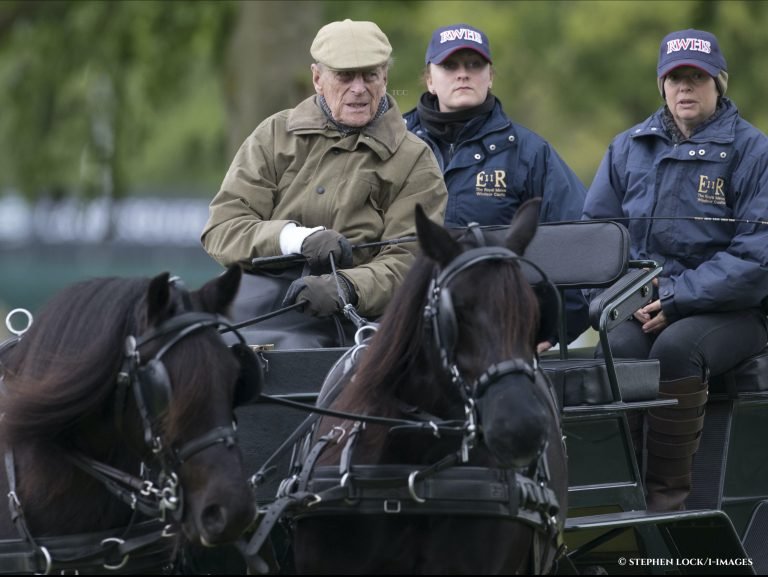In what turned out to be a day full of not only historic but emotional firsts, The Prince of Wales visited the Occupied Palestinian Territories in the West Bank, for the first time on Friday. Previously, the only member of the British Royal Family to visit Israel and the occupied Palestinian territories was The Duke of Cambridge in June of 2018.
The Prince of Wales began his visit to the West Bank with what could only be described as a genuine gesture of unity, by walking through the streets of Bethlehem with both Muslim and Christian leaders. Making his way through the streets, Prince Charles chatted with some of the shop owners as well as many stallholders on his way to the Mosque of Omar.
As of this day, the Mosque of Omar is the only mosque located in the Old City of Bethlehem. The mosque is named after Caliph Omar, the second Rashidun Muslim Caliph who conquered Jerusalem in 637AD. He issued a law that guaranteed Christians would be free to continue to worship while respect and safety would be granted to not only the worshippers and clergy but their shrine as well.
After learning about the mosque’s history, Charles visited the prayer hall to sign the visitors’ book.

The Prince’s next stop was a visit to the Church of the Nativity for an ecumenical service. One of the oldest working churches in existence, the Church of the Nativity was built over what is believed to be the site of Jesus’ birth. It is considered one of the most sacred and revered Christian sites in the world.
Friday’s ceremony marked the first time in the history of the church, that three different Christian churches have come together to hold a service of celebration acknowledging the works of Christian communities throughout the Holy Land and Middle East.

Afterwards, Prince Charles attended a reception in Bethlehem, which celebrated the close ties between the Palestinian and British people. Amongst the guests were Palestinian Christians, a wide variety of clerics from multiple denominations, and workers who devote their time helping many of the area’s refugees.
In his speech, The Prince of Wales described how he has tried before to help bring people of different faiths together.
He expressed: “Throughout my life, I have tried, in whatever very small way I can, to foster greater understanding between people of different faiths, to heal divisions and to remind people of so much that we share in common as opposed to what divides us. Indeed, as it says in Psalm 133 “behold, how good and pleasant it is when brothers dwell in unity!”
“Elsewhere in the world too, I have endeavoured to build bridges between different religions so that we might learn from each other and be stronger together as a result. It breaks my heart therefore that we should continue to see so much suffering and division. No one arriving in Bethlehem today could miss the signs of continued hardship and the situation you face,” the future King said.
“And I can only join you, and all communities, in your prayers for a just and lasting peace. We must pursue this cause with faith and determination, striving to heal the wounds which have caused such pain. It is my dearest wish that the future will bring freedom, justice and equality to all Palestinians, enabling you to thrive and prosper.”
After his speech, Prince Charles had a poignant conversation with the director of the Al Rowwad Centre, located in the Aida refugee camp, Dr. Abdelfattah Abu Srour. Discussing his works with refugee children, Dr. Abu Srour shared with The Prince of Wales how he works with young children and when he asks them what they would like to be when they grow up, they reply that they “want to die because nobody cares.”
Charles replied to him “it is painful to hear that.”
Before travelling to the Carmelite Convent and Sacred Heart Fathers Monastery, the Royal stopped by the Official Residence of President Mahmoud Abbas for a discussion on the proposal of the United States peace plan with regards to to the Israeli-Palestinian conflict.
In an effort to learn about traditional Palestinian agriculture, Charles toured the olive grove and fruit orchard that is a part of the Carmelite Convent and Sacred Heart Fathers Monastery. Olive trees are one of the preeminent crops that are grown in the Occupied Palestinian Territories and are used mainly for the production of olive oil.
On hand for the Prince to try were a selection of olives, seeds, olive oils and even some olive soaps. Additionally, Prince Charles helped to plant a young olive tree in the grove.
Olive trees are one of the main crops grown in the Occupied Palestinian Territories and are mainly grown for olive oil production.
The Prince has the opportunity to taste some olives and olive oil. pic.twitter.com/CXz52ChOGh
— Clarence House (@ClarenceHouse) January 24, 2020
For his final engagement of the tour, The Prince of Wales proceeded to the Mount of Olives in Jerusalem to visit the Church of St. Mary Magdalene. In this church is the grave of his paternal grandmother, Princess Alice of Battenberg. During World War II, Princess Alice helped to harbour many Jewish refugees in Nazi-occupied Athens. Because of her heroic efforts, Israel’s Holocaust memorial association named her one of the Righteous Among the Nations.
Princess Alice stayed in Greece after the war and founded the Christian Sisterhood of Martha and Mary – a Greek Orthodox order of nuns. She asked to be buried at the church next to her aunt, Grand Duchess Elizabeth Feodorovna of Russia, who is a Russian Orthodox saint.
While speaking of Princess Alice, Charles said that he has “long drawn inspiration from the selfless actions of my dear grandmother.”
In a loving tribute to his grandmother, The Prince of Wales laid flowers on her tomb and had made sure to have a new Greek royal standard made for her final resting place, once the original had become too worn. It was quite an emotional end to this most historic of tours.






